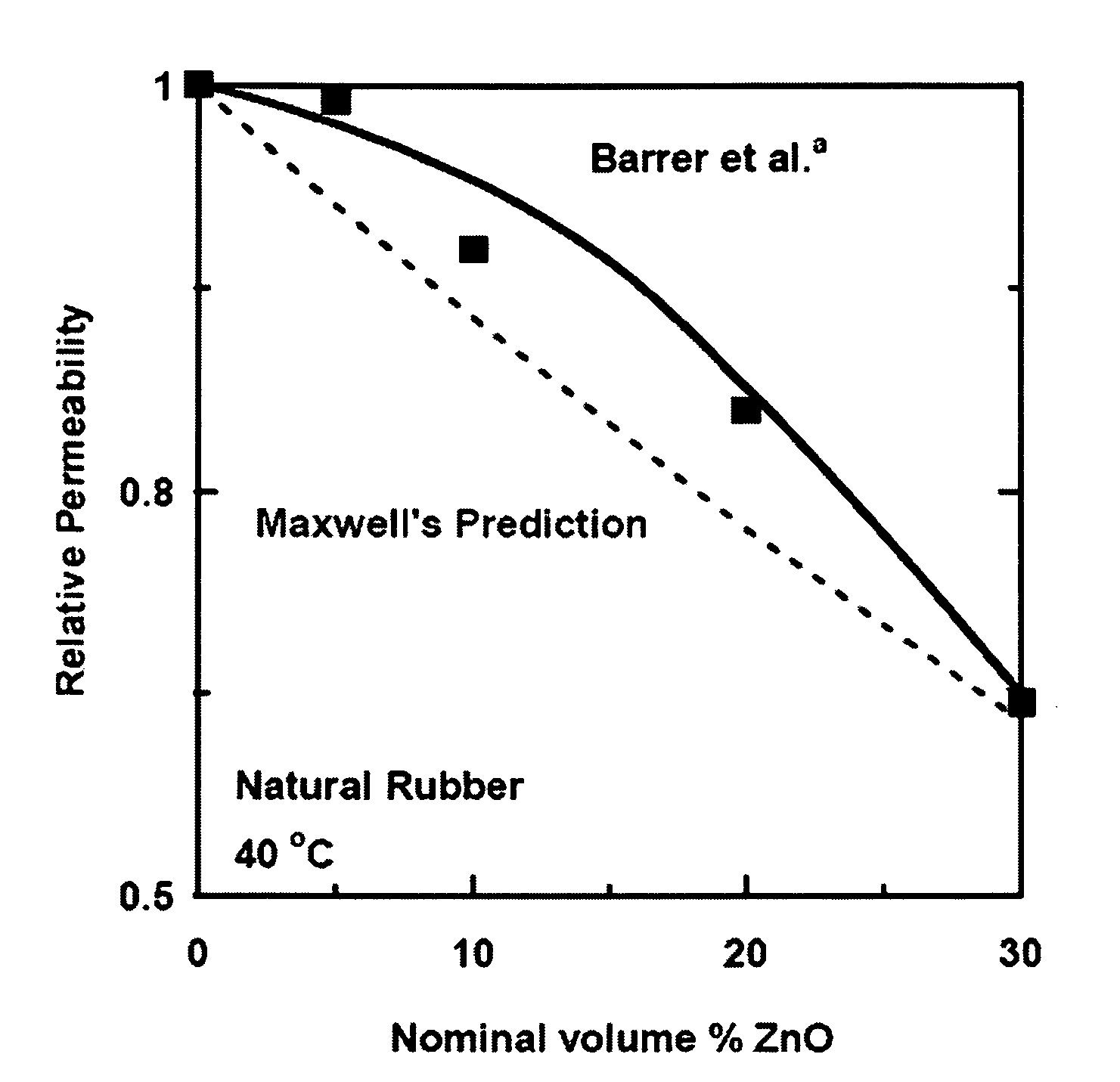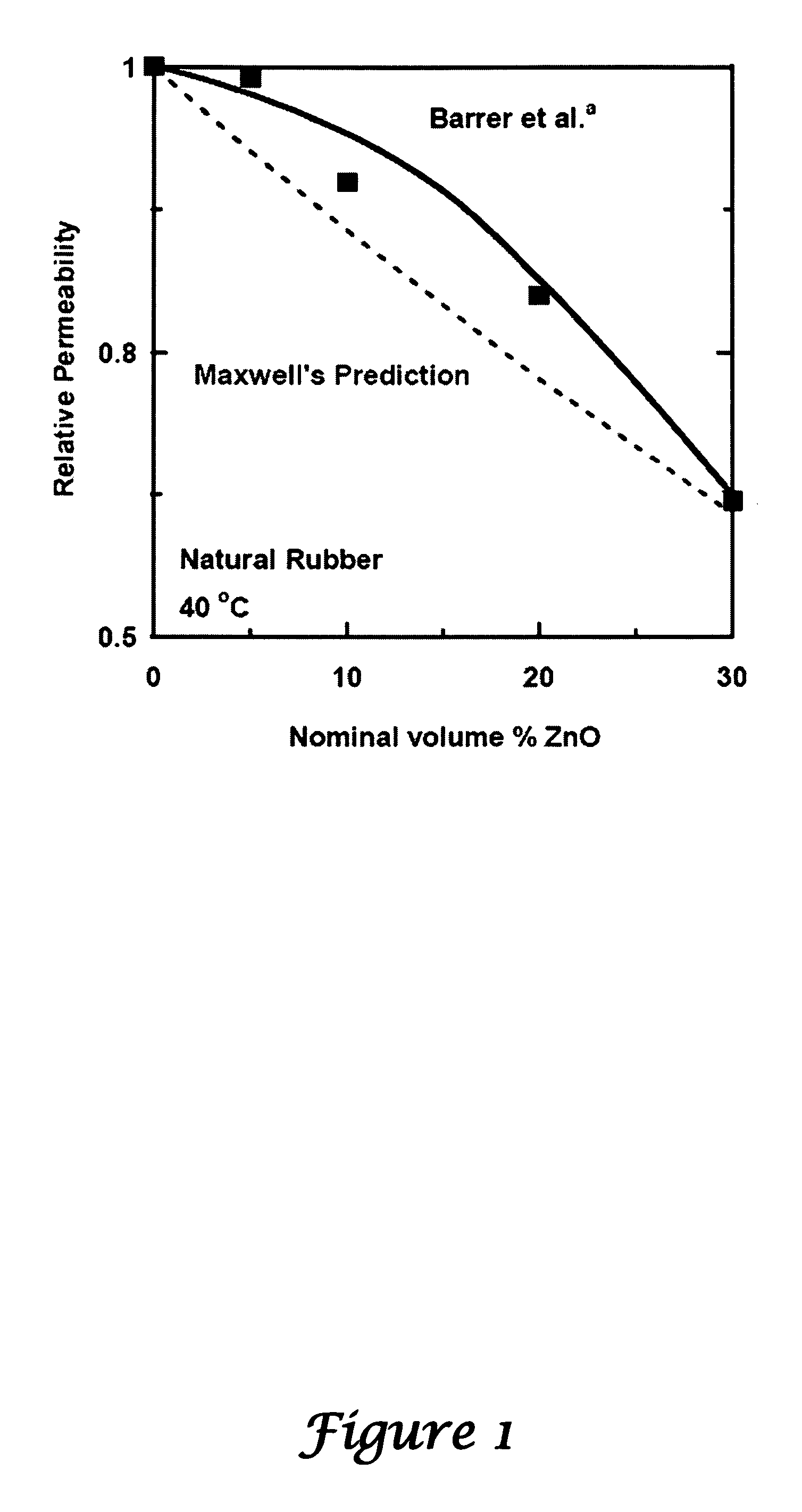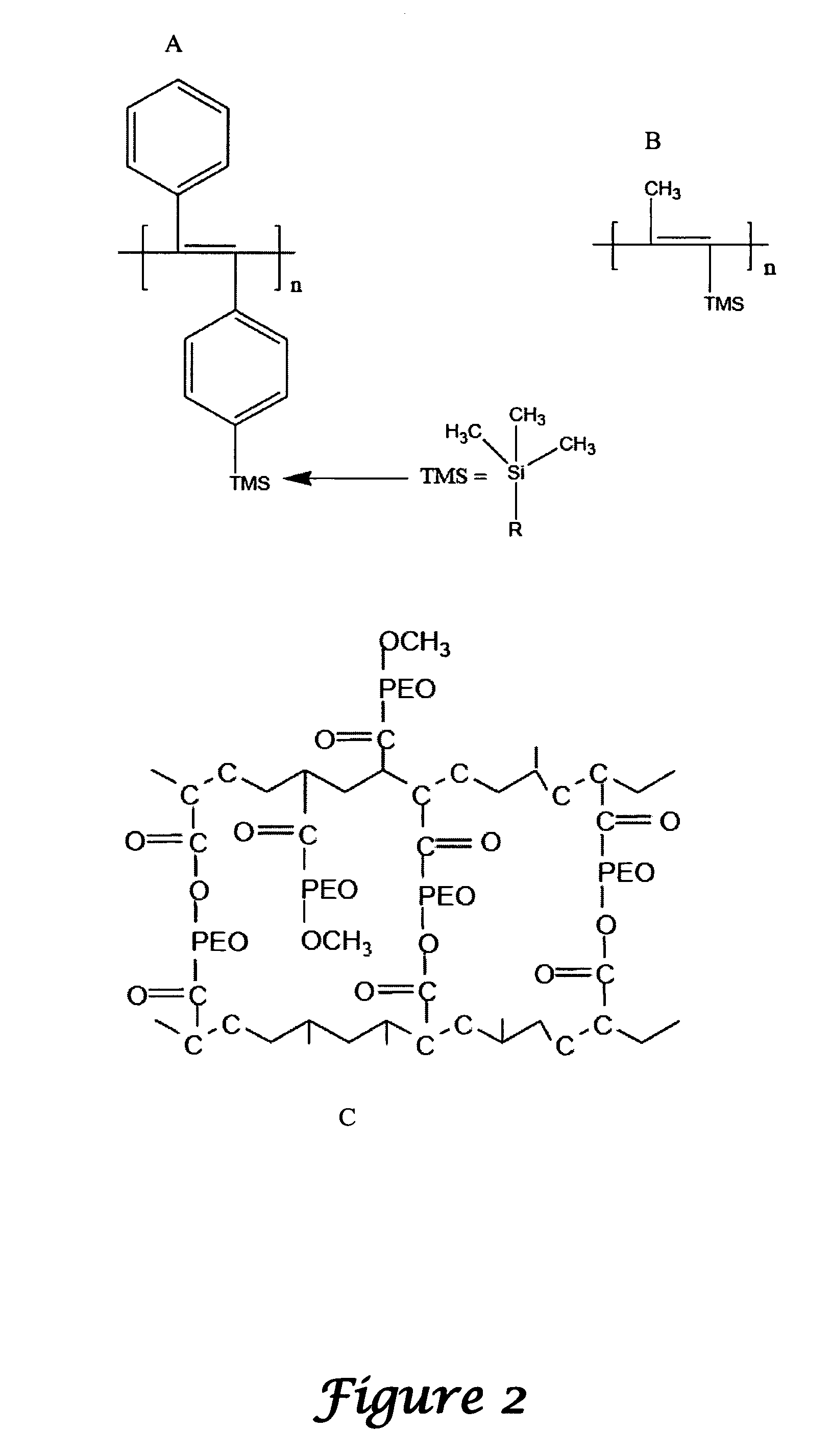Metal oxide nanoparticle filled polymers
a technology of metal oxide nanoparticles and polymers, applied in the field of gas separation, can solve the problems of affecting the separation of components, not very selective, frequency and amplitude, etc., and achieve the effect of superior gas separation and acceptable permeability and diffusivity
- Summary
- Abstract
- Description
- Claims
- Application Information
AI Technical Summary
Benefits of technology
Problems solved by technology
Method used
Image
Examples
Embodiment Construction
[0051]While the making and using of various embodiments of the present invention are discussed in detail below, it should be appreciated that the present invention provides many applicable inventive concepts that can be embodied in a wide variety of specific contexts. The terminology used and specific embodiments discussed herein are merely illustrative of specific ways to make and use the invention and do not delimit the scope of the invention.
[0052]The present invention addresses a variety of separation problems in the art. The present invention provides high permeability membrane materials that require less membrane surface area or pressure differential across the membrane to achieve the desired gas flux. The metal oxide nanoparticle filled polymer has one or more metal oxide nanoparticles dispersed within one or more polymeric materials and provides similar gas selectivity and greater gas permeability than the native polymer. In some instances the higher permeability produced by...
PUM
| Property | Measurement | Unit |
|---|---|---|
| diameter | aaaaa | aaaaa |
| diameter | aaaaa | aaaaa |
| diameter | aaaaa | aaaaa |
Abstract
Description
Claims
Application Information
 Login to View More
Login to View More - R&D
- Intellectual Property
- Life Sciences
- Materials
- Tech Scout
- Unparalleled Data Quality
- Higher Quality Content
- 60% Fewer Hallucinations
Browse by: Latest US Patents, China's latest patents, Technical Efficacy Thesaurus, Application Domain, Technology Topic, Popular Technical Reports.
© 2025 PatSnap. All rights reserved.Legal|Privacy policy|Modern Slavery Act Transparency Statement|Sitemap|About US| Contact US: help@patsnap.com



